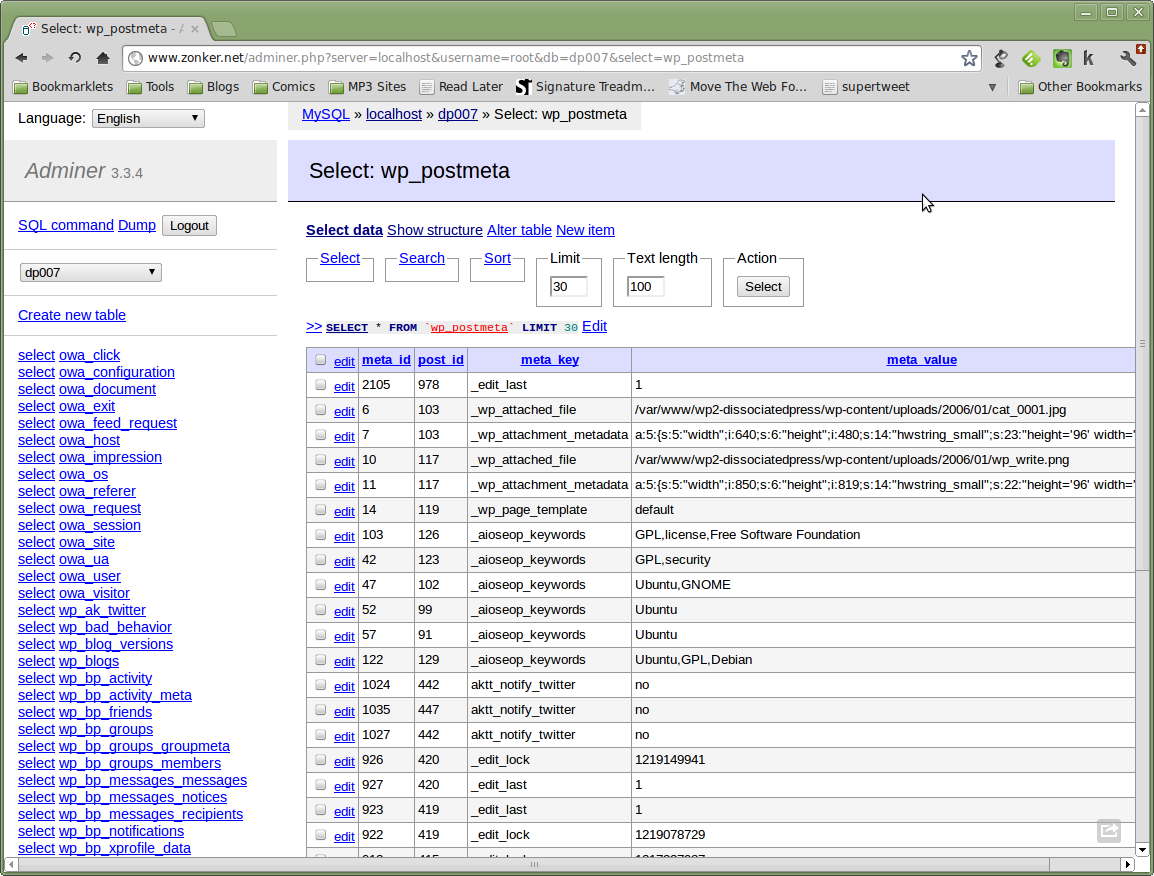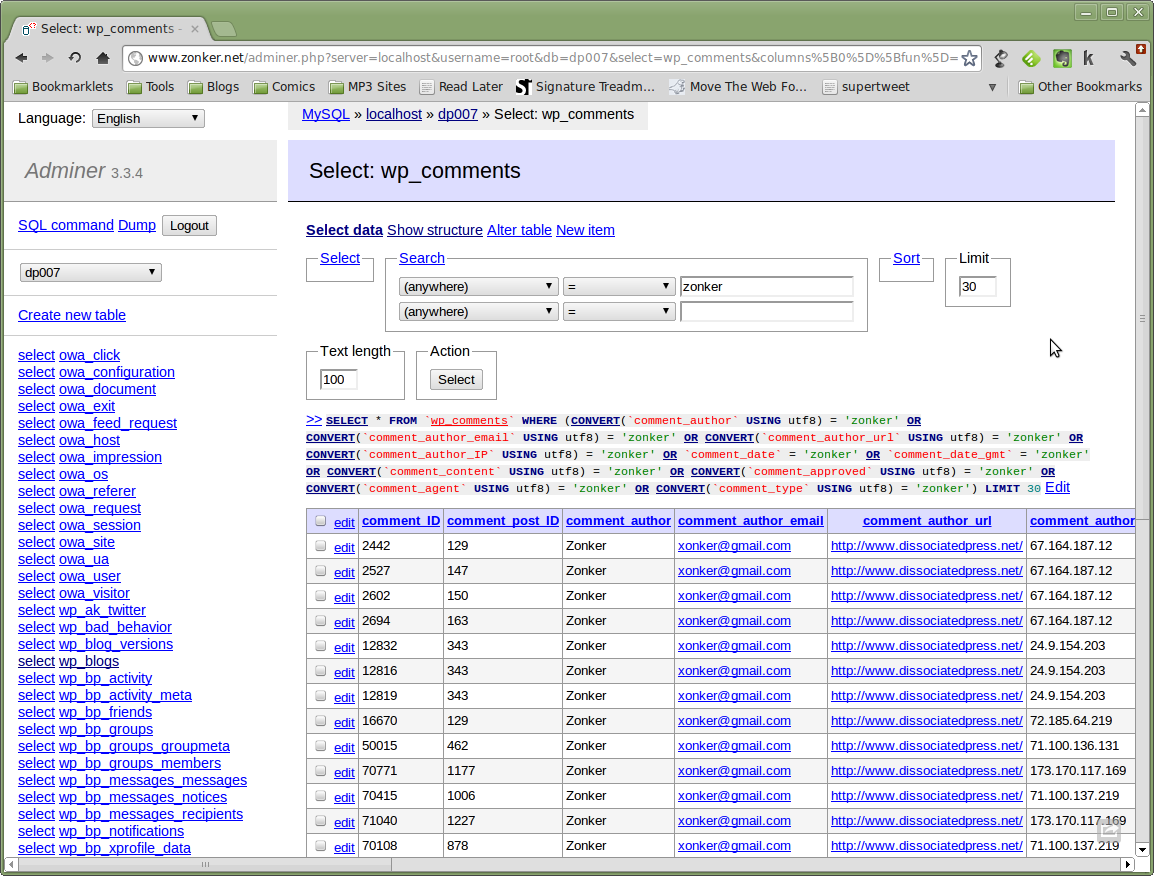If you’re looking for a simple way to manage your database effectively, you might want to have a look at Adminer. It’s simple to install, supports multiple databases, and has a number of features you don’t find in phpMyAdmin.
Adminer used to be known as phpMinAdmin. It’s a single PHP file that you can drop on your server to administer MySQL, PostgreSQL, SQLite, Microsoft SQL Server, or Oracle databases. This is particularly helpful if you have a system with more than one database server on it.
Using Adminer
Adminer is very easy to get started with. Just grab the PHP file and drop it on your server, then log in. You can even run Adminer locally and connect to a remote database if you prefer, and if you have MySQL set up to allow remote connections.
What can Adminer do? Pretty much anything you need to do with a database, or at least what you’d expect to be able to do via a Web-based interface. Manage databases, tables, pull or insert records, execute SQL commands, manage database processes, and so forth. Need to manage users? No problem. View the database variables? Piece of cake. Add triggers to a table, or alter a table? Yup.
If you’re using phpMyAdmin right now, you might want to have a look at the comparision chart. Seeing as it’s prepared by the Adminer folks, it might be a wee bit biased – but it does seem that Adminer has an edge on phpMyAdmin in features.
I’m not a DBA and my needs for a database management tool are pretty minimal, so I can’t say that I’ve stress-tested Adminer as thoroughly as other folks could. However, as a non-DBA, I find Adminer easy to use and I really like its links to the MySQL documentation.
The basic interface is fine for me. But if you really feel a need to pretty it up, you can grab one of the CSS skins and make it all shiny.
You might also look at Adminer if you need to embed an administration interface in a project or product. It’s dual-licensed, with Apache and GPLv2, so you can use it freely.
WordPress or Single Database
A lot of folks just need to work with one database. For instance, if you have a WordPress instance and use MySQL to power that, you might need to edit that database but have no need to work with any other databases. In that case, you might want to have a look at the Adminer plugins.
Adminer has plugins (or modules, extensions, etc.) for WordPress, Moodle, Drupal, Joomla, TYPO3, and others. It’s dead simple to install on WordPress (and I expect on other platforms, too). Just go to the Plugins menu and select Add New. Search for Adminer and install the plugin. Once it’s installed, it will be located under the Tools menu. Select Adminer, and it will automatically pull the database authentication data from your WordPress config.
If you want to provide an Adminer interface for a single database, check out Adminer Editor. This can be useful if you want to give users limited access, without the ability to add/drop databases and so forth.
If you haven’t tried Adminer, give it a shot. It’s free and really easy to test out. If you don’t like it, rm adminer.php is all you need to do. That’s pretty hard to beat!





